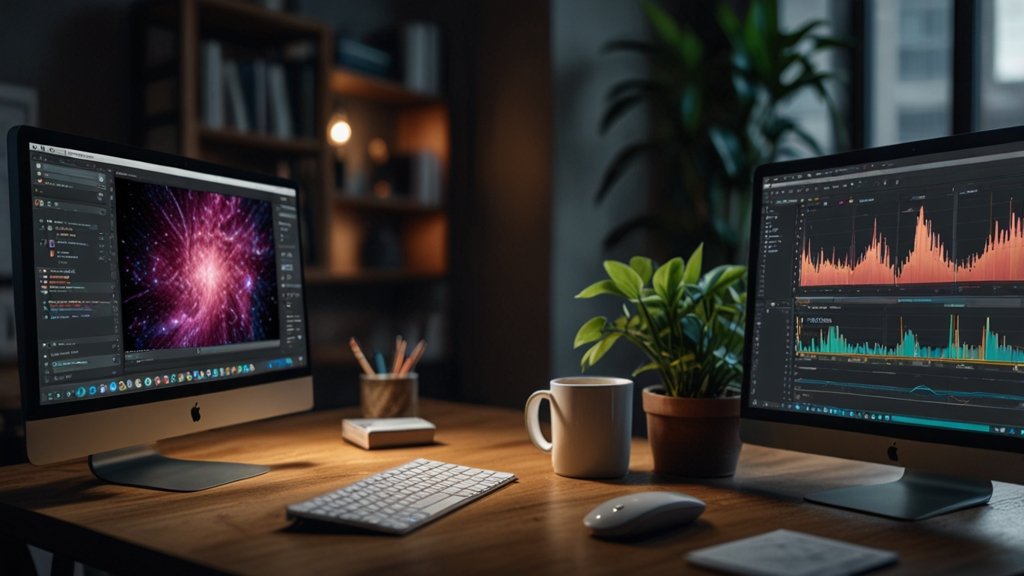Key Takeaways
- Streamlining workflow can save hours each week for busy professionals.
- Digital overload is a real challenge, but can be managed with smart online habits.
- Choosing the right digital tools can have a significant impact on daily productivity.
- Small changes in browser behavior or use of extensions can deliver big efficiency gains.
- Modern professionals benefit from a mindful balance between focus and connectivity.
Why Workflow Matters for Busy Professionals
Modern professionals are faced with a constant barrage of emails, notifications, and deadlines that demand seamless coordination, clear prioritization, and fast communication. A well-structured workflow is what keeps this digital storm under control. The ability to handle multiple tasks efficiently often comes down to the systems and tools a person uses every day. Adopting browser tools such as Shift Browser opens up new possibilities for managing information overload—centralizing accounts, communications, and critical resources in one unified platform.
Efficiency in the workplace has transformed from being a “nice-to-have” to a critical must-have for thriving in most industries. Professionals who invest energy in organizing their digital environments reap rewards quickly—whether it’s reduced stress or improved project outcomes. Research found that streamlined workflows enhance job satisfaction, promote better team collaboration, and help people maintain a healthier work-life balance. Even trimming just fifteen minutes from unnecessary tasks adds up to over an hour a week, or more than a full workday each month. That’s a powerful opportunity for any professional aiming to stay ahead.
Common Online Productivity Blockers
Despite the integration of helpful technologies, various obstacles still disrupt daily productivity. Disorganized screens filled with a chaotic array of browser tabs, pop-ups from messaging apps, and the non-stop ping of notifications can fragment attention and diminish clear thinking. According to a comprehensive survey, nearly 60% of workers’ time is consumed by “work about work”—non-essential activities like flipping between platforms, searching for files, or managing redundant logins. This unnoticed time drain quietly erodes the main blocks of productive work during the day.
The digital clutter snowballs further as projects multiply or team members communicate across inconsistent channels. In fact, even something as seemingly harmless as keeping too many tabs open in a browser can contribute to stress and cognitive fatigue, as explored in a PCWorld article on Chrome tab overload. An unstructured digital layout can make every task feel more urgent than it is, ramping up anxiety and overwhelming focus. For professionals whose days are already packed, quick access to organized content is a game changer. Reducing these blockers frees up precious mental space, reduces mistakes, and paves the way for more innovative and meaningful work.
Steps to Optimize Your Digital Workspace
Optimizing your digital workspace isn’t as daunting as it sounds. Small steps yield impressive improvements, and the effects are immediate. These five techniques can help any professional overhaul their digital routines for greater clarity and speed:
- Audit your daily habits. Take inventory of the activities that fill your day, focusing on those that involve repetitive or fragmented online actions. Keep a notepad open for a couple of days and log every time you switch windows, search for a document, or respond to notifications.
- Consolidate tools and platforms. Streamline your arsenal. Many workers use five or more software tools daily, but most could get by with fewer if everything from project tracking to communication is centralized in tools designed for multi-tasking and integration.
- Set boundaries for notifications. While notifications offer real-time updates, research suggests that every alert can disrupt “flow state.” Mute non-essential notifications, set device “do-not-disturb” times, and create specific windows for checking emails or messages.
- Organize digital files logically. Label files and folders by project or year. Use cloud storage to access essentials from anywhere, and periodically purge what’s no longer needed. Bookmark frequently used web resources for fast retrieval.
- Embrace browser extensions and automation. Extensions can automate passwords, fill forms, sync notes, or block distracting sites. Testing out a couple of reputable extensions tailored to your needs may save you hours weekly and keep you focused on what truly matters.
By combining these small tweaks, professionals often find their workload feels lighter almost overnight. Clear, consistent digital systems allow for more meaningful progress and less time lost to frustration or confusion.
Handy Browser Features That Boost Productivity
Modern browsers are more than simple web gateways—they’re comprehensive productivity platforms. Features such as tab grouping allow users to separate tasks, projects, and clients into neat collections, cutting down on the feeling of online chaos and making transitions smoother. Having your browser remember and autofill passwords not only improves convenience but also tightens personal digital security.
- Tab pinning helps keep regularly visited websites—like project management tools or CRMs—right at your fingertips, eliminating the frustration of constant searching.
- Reader mode can be invaluable during research or learning, stripping away all the distractions so only the content remains in focus. This is perfect when diving into long reports or industry articles.
- Cloud sync capabilities ensure that history, bookmarks, and passwords are accessible on any device—a must for modern professionals who work from the office, home, or on the road.
Simple efficiency hacks like customizing your homepage for quick access to priority resources or learning a handful of time-saving keyboard shortcuts can also deliver significant cumulative gains in productivity.
Mindful Multitasking and Avoiding Burnout
Multitasking might feel productive, but research has shown that rapidly switching between tasks degrades focus and increases the risk of errors. It takes an average of 23 minutes to regain full focus after an interruption—a figure that stacks up quickly over a busy day. Mindful multitasking swaps out constant context switching for structured intervals of deep work, building in scheduled breaks to refresh and recharge.
For example, the Pomodoro Technique—which alternates focused 25-minute work sessions with 5-minute breaks—has been credited by countless professionals with improved clarity and higher-quality output. Others benefit from clearly marked “heads-down” time blocked off on their calendars, signaling to colleagues that this window is reserved for their most demanding work. These intentional boundaries not only stave off burnout but often spark higher creativity and better results, even in high-pressure environments.
Data-Driven Insights on Professional Productivity
Numbers don’t lie: streamlined workflows deliver real benefits. Employees who invest in optimizing their digital habits see up to 40% improvements in job satisfaction, and teamwork improves as processes become clear and repeatable. Unified browser habits enable better collaboration and reduce duplicated work, especially in organizations where remote or cross-functional teams are common.
Many professionals now use analytics tools to track and reflect on their digital habits. The ability to visualize how much time is spent on focused work versus emails or meetings enables ongoing, data-driven adjustments. Over time, these small corrections help refine both performance and well-being. The result is a happier, more engaged workforce—one that feels empowered by its tools rather than burdened by them.
Final Thoughts on Staying Productive Online
Achieving a seamless workflow is about more than just fancy tools; it’s the result of deliberate planning, small behavioral tweaks, and staying open to new ideas. By taking time to assess what works, embracing helpful browser features, and setting boundaries for focused work, busy professionals can reclaim not just their time, but their sense of satisfaction and creativity as well. Thoughtful digital habits ensure that energy is spent where it truly matters—enabling better work, healthier routines, and ultimately a happier, more balanced professional life.
YOU MAY ALSO LIKE: PLG Supplies: Your Secret Arsenal for Self-Selling Products











